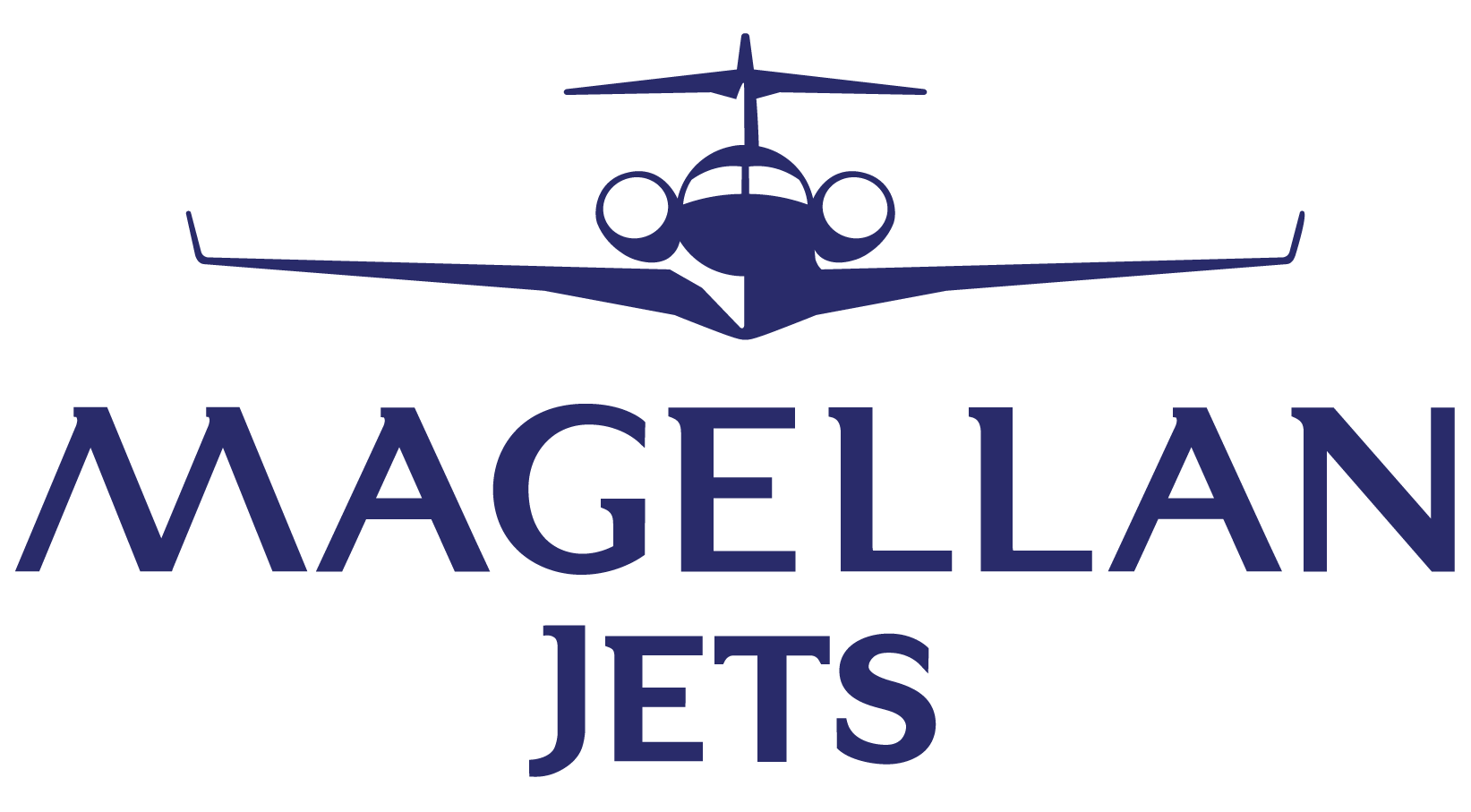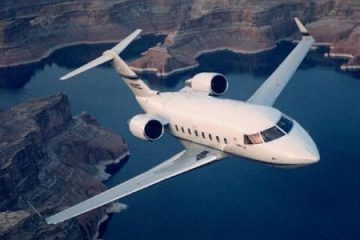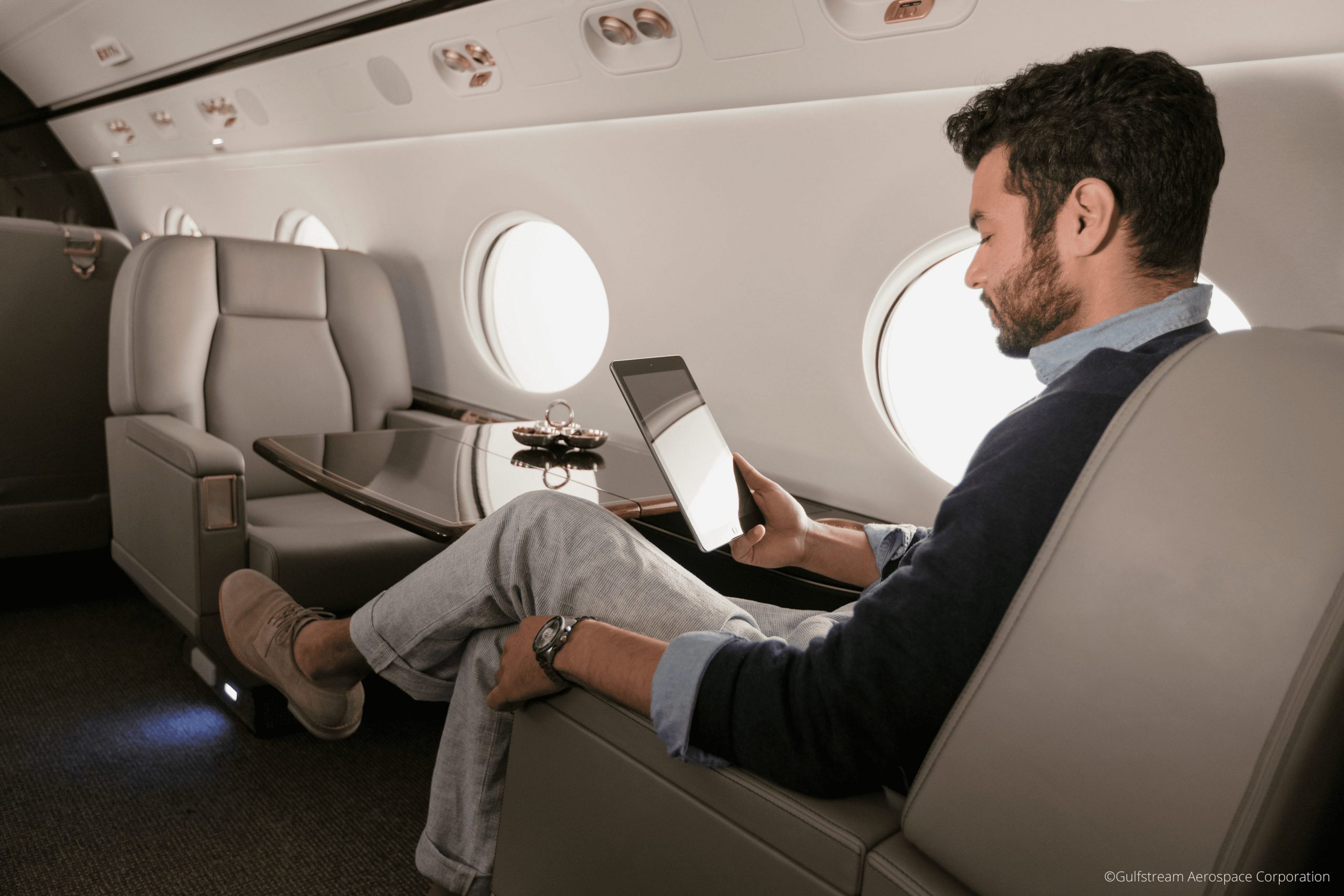The jets in Bombardier’s Challenger 601 series are the successors to the Challenger 600, encompassing all the same features that made that first-in-its-line jet so popular within the private aviation industry—a large cabin, transcontinental performance, exquisite comfort and style—with the addition of a more reliable flight system, improved range, and increased maintainability. The 601 series includes the 1A, 3A, 3A/ER, and 3R variants, the latter being the most recent, produced from 1993-96.
*Side specs based on 601-1A
Challenger 601 Series Features
Interior
The Challenger 601 series retains the 600’s abundance of cabin space, having been primarily designed for passenger comfort and convenience on long-distance flights. That spacious cabin measures 8.2 feet wide, 6.1 feet tall, 28.3 feet long, with a total volume of 1,035 cubic feet. The large dimensions of the aircraft allow passengers to move around and stretch their legs easily while up in the air. The 601 series’ cabins are rated at 8.8 psi, allowing it to maintain sea-level cabin pressure up to 23,200 feet, which reduces passenger fatigue upon reaching their destination. The business jet is equipped with 115 cubic feet of internal baggage storage, giving passengers the ability to access their luggage at any time during the flight.
Aside from the large amount of space offered in the 601, a number of amenities are provided to ensure a comfortable travel experience. Cabin amenities include leather seats, individual power outlets, a full galley, an enclosed lavatory, climate control, and a cabin entertainment system. Featuring minimal noise, low vibration, and plenty of natural light, passengers can focus on work or simply enjoy the view of the beautiful world below.
Aside from the large amount of space offered in the 601, a number of amenities are provided to ensure a comfortable travel experience. Cabin amenities include leather seats, individual power outlets, a full galley, an enclosed lavatory, climate control, and a cabin entertainment system. Featuring minimal noise, low vibration, and plenty of natural light, passengers can focus on work or simply enjoy the view of the beautiful world below.
Performance
Compared to the 600, the 601 series is a major improvement in terms of flight time, performance, and reliability, with each variant growing the jet’s range. With its two General Electric CF43-1A engines, the Challenger 601-1A can achieve a maximum cruise speed of 528 mph and a range of 3,180 nautical miles, over 300 miles more than the 600; the 601-3A’s twin CF24-3A high-bypass engines push the range to 3,280 nautical miles at .85 mach; the 601-3R’s dual CF34-3A1 engines can take five passengers over 3,500 nautical miles. Because of the upgraded winglet design, the jets travel even more smoothly, too. The 601-1A consumes 278 gallons of fuel per hour and has a larger fuel capacity than the Challenger 600, allowing it to perform longer trips at a faster speed and with greater reliability. Even greater range is added with the 601-3A/ER’s tailcone fuel tank.
Avionics
Another way the 601 series improves upon the 600 is with advanced avionics. The Honeywell avionics suite in the 601-1A provides pilots with two DFZ-800 flight guidance systems, a Honeywell laser INS, dual Honeywell EDZ-800 EFIS, and Collins digital radios. With all the instruments incorporated into the 601-1A’s avionics suite, the pilot’s workload is reduced, while the aircraft’s stability and reliability are improved. The 601-3R upgrades to the fully integrated Honeywell SPZ-8000 system, with left- and right-side primary flight displays and a center multifunction screen.















